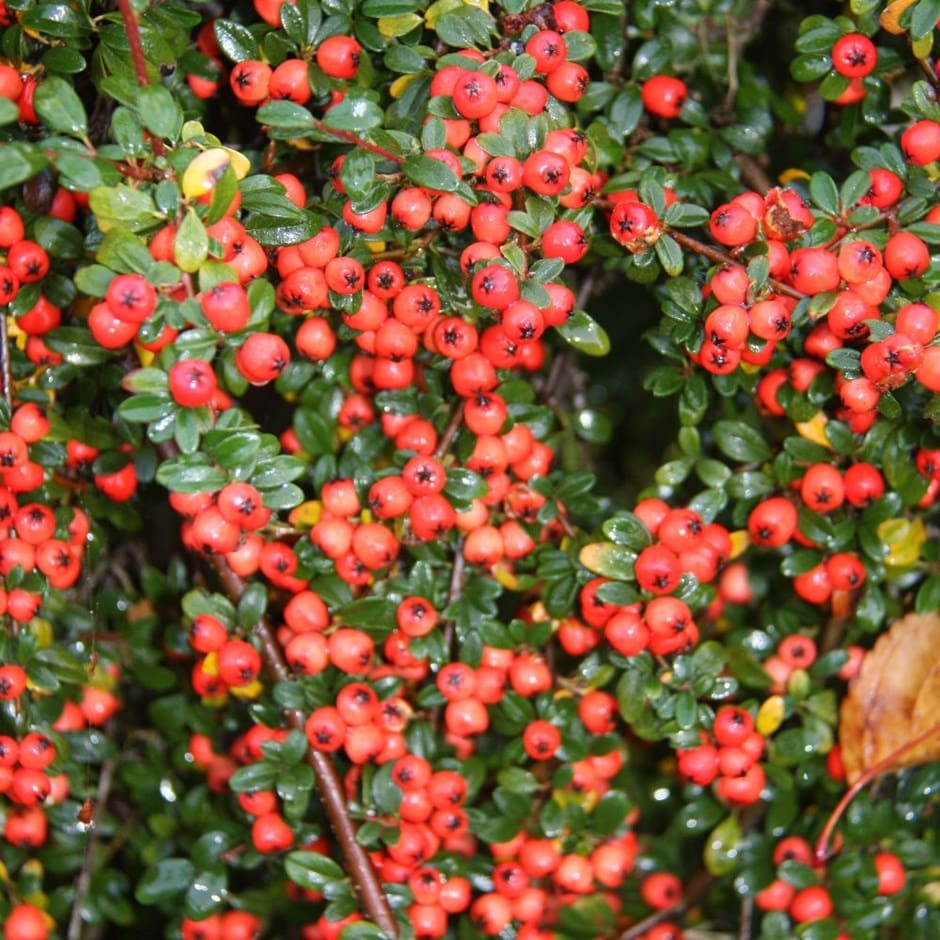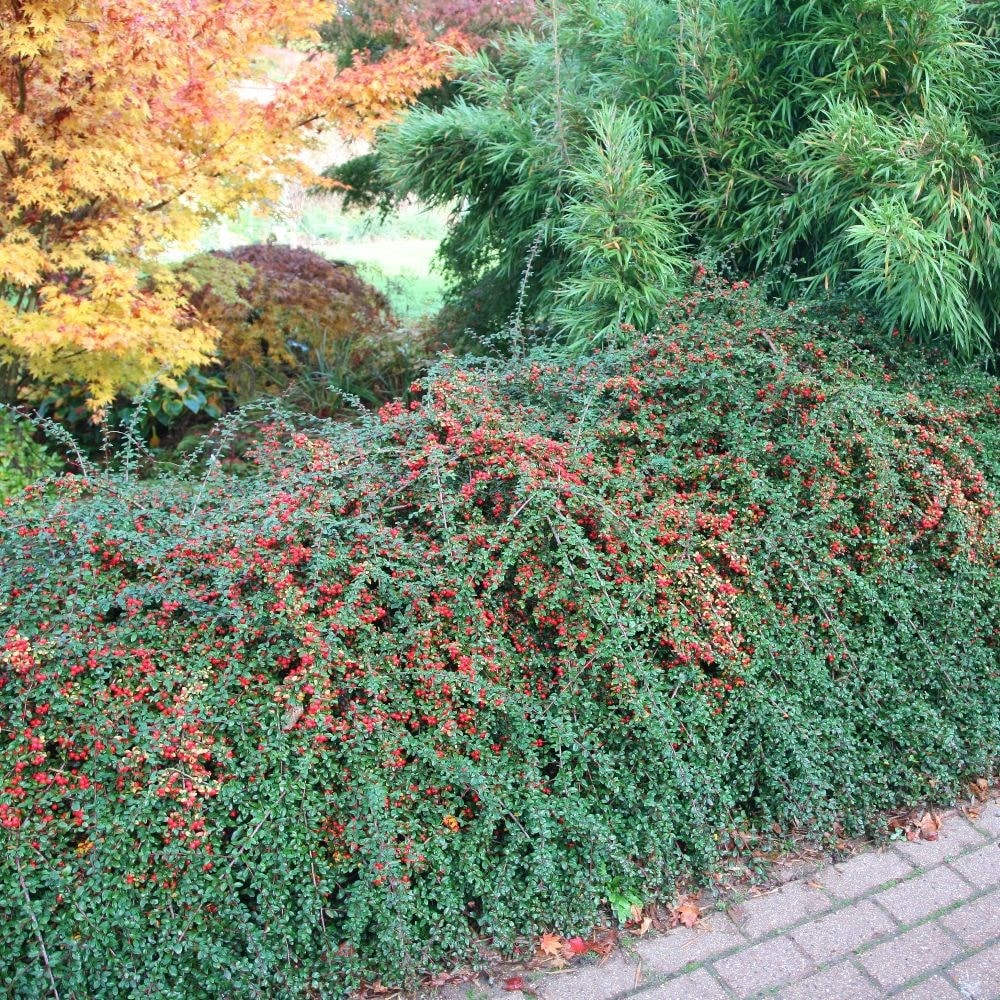Cotoneaster × suecicus 'Coral Beauty'
coral beauty cotoneaster
- 9cm pot
- £7.99 £9.99
- In stock (shipped within 2-3 working days)
- 2 litre pot
- £19.99
- In stock (shipped within 2-3 working days)
- 3 × 2 litre pots
- £47.99 £16.00 each
- In stock (shipped within 2-3 working days)
Delivery options
- Standard £5.99
- Position: full sun or partial shade
- Soil: moderately fertile, well-drained soil
- Rate of growth: average to fast
- Flowering period: May to June
- Hardiness: fully hardy
Forms a dense, low-maintenance groundcover with small, glossy evergreen leaves that suppress weeds and stay attractive year-round. In late spring to early summer, it produces masses of small white flowers, followed by a heavy crop of orange-red berries in autumn, which are popular with birds.
It’s a versatile option for groundcover, banks, walls, and exposed sites, or trained forms on a standard stem for containers and small gardens. Cotoneaster × suecicus 'Coral Beauty' is a compact, RHS award-winning shrub valued for its year-round structure, seasonal interest, and wildlife benefits. Slow growing, it remains neat and manageable, even in smaller spaces.
It’s a versatile option for groundcover, banks, walls, and exposed sites, or trained forms on a standard stem for containers and small gardens. Cotoneaster × suecicus 'Coral Beauty' is a compact, RHS award-winning shrub valued for its year-round structure, seasonal interest, and wildlife benefits. Slow growing, it remains neat and manageable, even in smaller spaces.
Plant in well-drained soil in full sun or light shade. Cotoneaster tolerates poor or dry soils once established but benefits from improved soil with added organic matter at planting time. Space well to allow for its spreading habit and air circulation around the base.
Water regularly during the first growing season to help establish a strong root system. Once established, it becomes drought tolerant. Avoid waterlogged conditions.
After flowering, lightly cut back any branches that spoil the symmetry of the plant. In autumn, trim back lightly to reveal fruit and maintain a tidy shape. Avoid hard pruning, as it can reduce flowering and berry production the following season.
Apply a generous 5–7cm (2–3in) mulch of well-rotted compost or manure in spring to boost growth and suppress weeds. Remove any dead, damaged or congested branches in late winter or early spring.
Cotoneaster responds well to gentle shaping, and regular light pruning helps encourage a compact habit and better flowering and fruiting. Great for banks, low hedges or groundcover where minimal upkeep is needed.
Water regularly during the first growing season to help establish a strong root system. Once established, it becomes drought tolerant. Avoid waterlogged conditions.
After flowering, lightly cut back any branches that spoil the symmetry of the plant. In autumn, trim back lightly to reveal fruit and maintain a tidy shape. Avoid hard pruning, as it can reduce flowering and berry production the following season.
Apply a generous 5–7cm (2–3in) mulch of well-rotted compost or manure in spring to boost growth and suppress weeds. Remove any dead, damaged or congested branches in late winter or early spring.
Cotoneaster responds well to gentle shaping, and regular light pruning helps encourage a compact habit and better flowering and fruiting. Great for banks, low hedges or groundcover where minimal upkeep is needed.
- Humans/Pets: Fruit are ornamental - not to be eaten


